Rapid application development Wikipedia
It’s designed for quick product development in the ever-evolving digital landscape.Joint Application Development (JAD) is a collaborative approach uniting stakeholders, tech experts, and business reps in workshops. It integrates client input into the development process for efficient, tailored end products. It molded itself to fit the requirements of the time while retaining some core development guidelines. The RAD approach is driven by user interface needs and is perfect for application development requiring quick development and deployment.
Rather than making you spend months developing specifications with users, RAD begins by defining a loose set of requirements. “Loose” because among the key principles of rapid application development is the permission to change requirements at any point in the cycle. Developers then gather user feedback to tweak and improve prototypes and create the best possible product.
What does RAD mean?
In this rapid application development phase, the developer’s goal is to build something that they can demonstrate to the client. This can be a prototype that satisfies all or only a portion of requirements (as in early-stage prototyping). While the RAD methodology’s emphasis on rapid prototyping and iterative development has its advantages, it also has the potential for poorly designed software. The use of RAD should be considered on a case-by-case basis, depending on the project’s specific requirements and constraints.
The final stage of RAD involves deploying the built system into a live production environment. The deployment phase involves intensive scale testing, technical documentation, issue tracking, final customizations, and system simulation. Teams also spend time debugging the app and running final updates and maintenance tasks before going live. Engineers and developers work tirelessly to flesh out a working system from a working model. Feedback and reviews are crucial at this stage and most bugs, issues, and alterations are addressed during this stage.
Over 200k developers and product managers use LogRocket to create better digital experiences
Once the project is scoped out, it’s time to jump right into development and build out the user design through various prototype iterations. By reducing planning time and emphasizing prototype iterations, RAD allows project managers and stakeholders to accurately measure progress and communicate in real time on evolving issues or changes. This results in greater efficiency, faster development, and effective communication. Rapid application development is well-suited for small and medium-sized projects where the application is intended to be delivered incrementally. It requires a highly skilled and multi-talented small team with strong communication and diverse skill sets. Because RAD is customer-driven, it demands the availability of resources at nearly every step of the development lifecycle.
- In summary, the advantages of low code application development are substantial and diverse.
- Maybe the extranet’s support mail is pointing to a fundamental feature that’s missing from the product.
- Consider the rapid application development model (RAD), invented by James Martin in 1991.
- This requires team members with excellent domain knowledge, which may not always be available, particularly in smaller businesses that may be reliant on external experts.
- Headquartered in Fremont, California, Aehr Test Systems is a worldwide provider of test systems for burning-in and testing logic, optical and memory integrated circuits and has over 2,500 systems installed worldwide.
- Graphical user interface builders are often called rapid application development tools.
During this stage, developers, clients (software users), and team members communicate to determine the goals and expectations for the project as well as current and potential issues that need to be addressed during the build. These practitioners, and those like them, helped RAD gain popularity as an alternative to traditional systems project life cycle approaches. Aehr Test has developed and introduced several innovative products, including the ABTS and FOX-P families of test and burn-in systems and FOX WaferPak Aligner, FOX WaferPak Contactor, FOX DiePak Carrier and FOX DiePak Loader. The ABTS system is used in production and qualification testing of packaged parts for lower power and higher power logic devices as well as all common types of memory devices. The WaferPak Contactor contains a unique full wafer probe card capable of testing wafers up to 300mm that enables IC manufacturers to perform test and burn-in of full wafers on Aehr Test FOX systems. The DiePak Carrier is a custom designed reusable test board for the FOX-XP system which enables IC manufacturers to perform cost-effective test/burn-in of singulated die and modules.
Can my team iterate quickly?
Named by Van Rossum for his interest in the Monty Python movies, Python initially did not gain the same heavy support as Perl. Over time, however, the advocate count grew, and the comp.lang.python usenet group was founded in 1994. Unlike GNU, Python was originally released completely “free;” no stated or implied license accompanied it. RAD is a better option when you are working on a project with a short timeframe. This is because RAD is focused on immediate actions and outcomes — perfect for those tight turnarounds.

RAD was born out of frustration with the waterfall software design approach which too often resulted in products that were out of date or inefficient by the time they were actually released. The term was inspired by James Martin, who worked with colleagues to develop a new method called Rapid Iterative Production Prototyping (RIPP). In 1991, this approach became the premise of the book Rapid Application Development. Starting with the ideas of Barry Boehm and others, James Martin developed the rapid application development approach during the 1980s at IBM and finally formalized it by publishing a book in 1991, Rapid Application Development.
Kissflow – The best Rapid Application Development platform
Typically, the waterfall model places emphasis on proper documentation of artefacts in the life cycle activities. Advocates of agile software development paradigm argue that for any non-trivial project finishing a phase of a software product’s life cycle perfectly before moving to the next phases is practically impossible. A related argument is that clients may not know exactly what requirements they need and as such requirements need to be changed constantly. Rapid application programming languages for vr development (RAD) is an incremental sequential software development process aimed at very short development cycles by using a component-based construction approach. To speed up the process of application development, usually more that one development team is working on separate system components or application modules. A combination of techniques and tools such as joint applications development (JAD), joint requirements planning (JRP), CASE tools, and 4GL contribute to RAD.

During this step, stakeholders sit together to define and finalize project requirements such as project goals, expectations, timelines, and budget. When you have clearly defined and scoped out each aspect of the project’s requirements, you can seek management approvals. If you’re looking for a faster method of application development, you’ll want to choose something other than the Waterfall model, which requires sticking to a planned schedule and doesn’t allow for continuous iterations.
What Is Rapid Application Development?
RAD approaches, on the other hand, recognize that software development is a knowledge intensive process and provide flexible processes that help take advantage of knowledge gained during the project to improve or adapt the solution. At the very beginning, rapid application development sets itself apart from traditional software development models. It doesn’t require you to sit with end users and get a detailed list of specifications; instead, it asks for a broad requirement. The broad nature of the requirements helps you take the time to segment specific requirements at different points of the development cycle. The rapid application development model requires a very high-tech environment where software interface design tools and publications management processes allow for fast response to the ever-evolving specification of user needs requirements.
In the case of a web page the control is embedded into the page by using a few lines of code that tell the system what control is required and what content to load into it. The code tells the browser what control is required and if the control is already installed on the system it is executed, if not the control is downloaded, installed and then executed. Lines 6 through 16 are used to create the function that creates the egg that will be used in the script. Lines 7 through 9 execute inlineegg functions called from the inlineegg class that was imported on line 1, to grab the generated egg from the main code base. Lines 11 and 12 grab the code to set the user ID and group ID, respectively, followed by Line 13, which adds the execve syscall to the egg.
How Does RAD Methodology Differ From Agile Development?
JAD is an alternative to the interviewing activity of the traditional SDLC, allowing user participation in the development process. Systems developers and users attend intensive meetings discussing and documenting user needs. The specifications identified in the JAD sessions can be also used to develop prototypes. Rapid Application Development or RAD means an adaptive software development model based on prototyping and quick feedback with less emphasis on specific planning. In general, the RAD approach prioritizes development and building a prototype, rather than planning.
In this chapter, we will explore these advantages in depth, providing insights into why low code development is becoming a go-to choice for creating software applications. The advantage of doing it this way allows developers to identify any early errors or complications within the prototypes that are created in each iteration. Whereas with the Waterfall methodology, errors can only be distinguished at the very end, which can cause very big delay in trying to fix the problems, therefore meaning it’ll be very costly too.
Implementation wise ActiveX works by automatically downloading and executing on the client side (specifically in the web browser in most cases). Developers can choose to use their programming language of choice such as C, C++, Visual Basic and can develop their own controls to perform whatever task they have envisioned. Visual Studio and the .NET platforms are the most common platforms in which ActiveX controls are developed. ActiveX controls are one of the various types of controls that use what is known as the COM (Component Object Model) family of technologies to facilitate interoperability between other COM enabled applications and technologies. ActiveX was designed to build firmly on what was introduced in OLE (Object Linking and Embedding) and optimize the technology for Internet usage and environments.




